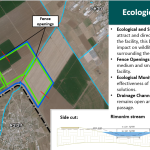-
- Developing and generating for our planet
- Doral’s Contribution to Reducing Emissions and Addressing for Climate Change
-
Innovation
Full chapter- Innovation
- A Leader in Israel’s Energy Storage Sector
- Doral Tech – Energy of Innovation
- A Bridge to Academia and Future Technologies
- Leading the Field of Dual-Use Renewable Energy Production in Israel
- Development of ‘Green Hydrogen’ Projects
- Development and Management of Environmental Infrastructure Integrated with Renewable Energy
- At the Forefront of Israel’s Green Electricity Market
- Reducing Water Consumption
- Preserving Biodiversity
- Waste Treatment and Promotion of Circular Economy
- Our Overall Environmental Impact – Greenhouse Gas Emissions Data
- Progress Against Targets
-
-
- Responsible and Ethical Management of Our Business
-
Corporate Management at Doral
Full chapter - Corporate Governance for ESG
- Business Ethics and Compliance at Doral
- Preventing Bribery, Corruption, and Conducting Internal Audits
- Information Security and Business Continuity
- Risk Management
- Responsibility in Our Value Chain
- Progress Against Our Targets
-

Preserving Biodiversity
Doral is committed to preserving biodiversity at its facilities and, as part of this approach, advocates minimizing the use of large land areas and open spaces for renewable energy production as much as possible, constantly working to find solutions that will save land and reduce harm to ecological corridors and wildlife.
The topic of biodiversity is managed at the Company by a dedicated function responsible for monitoring the implementation of work procedures and reporting, as well as communication with external organizations.
During the initial land analysis process, an environmental impact assessment is conducted to check all existing sensitivities in the area, such as forests, nature reserves, ecological corridors, wetlands, etc.
In cases where a certain environmental sensitivity is identified by professionals during land analysis, the Company seeks to find a suitable alternative without environmental impacts. Additionally, if during the project’s advancement, it becomes evident that there may be associated environmental impacts that were not known during the initial land analysis, the Company will exclude and/or limit the use of the relevant land area.
For example, in the Megiddo area project, a joint project of several communities with a capacity of about 60 megawatts, environmental bodies raised the issue that a drainage channel near the plan could serve as an ecological artery. Therefore, Doral proposed to avoid fencing the area to allow for continued natural and full ecological activity. Moreover, additional ecological solutions were proposed in the area, such as integrating openings in the fence, ecological monitoring, and more.
The environmental plan for the area can be accessed on the Planning Administration’s website: https://mavat.iplan.gov.il/SV4/1/2005183102/310.
Ecological Solutions
•Ecological and Shrub Buffer: Designed to attract and direct animals to move around the facility, this buffer may reduce the impact on wildlife movement in the area surrounding the project. •Fence Openings: Allows the movement of medium and small mammals through the facility. •Ecological Monitoring: To assess the effectiveness of the passages and ecological solutions. •Drainage Channel: The channel's path remains open and natural, allowing animal passage.

During the planning process, Doral systematically defines environmental impact areas, supported by professional documentation such as an environmental landscape document, a runoff management appendix, a site rehabilitation plan to convert it back to agricultural land (if applicable), and an architectural landscape plan (as required). The key environmental impact areas include landscape, ecology, soil contamination, radiation, drainage, dust, and light disturbances.
A comprehensive environmental report by Doral, which was submitted for approval to the Planning Authority for the Hedera Shean Project “TATL 97” is available at the following link: https://mavat.iplan.gov.il/SV4/1/99000933835/310
Doral uses wildlife-friendly fencing in coordination with the Israel Nature and Parks Authority (INPA), providing a solution for wildlife movement and reducing the fragmentation of open spaces. The Company follows guidelines from authorized bodies regarding the integration of plant species relevant to the project environment. For every project, Doral collaborates and coordinates with the Ministry of Environmental Protection and the Israel Nature and Parks Authority.
In additional projects, such as biogas initiatives, Doral prepares comprehensive environmental documentation that examines all aspects of the facility’s interaction with the environment, including emissions, odors, noise, drainage, visibility, and landscape integration.
In Doral Environmental Infrastructure projects, the Best Available Techniques (BAT) guidelines from the Ministry of Environmental Protection are mandatory during planning and construction of biogas and the waste-to-energy facilities. Accordingly, the Company collaborates technologically and commercially with leading and highly experienced global technology companies, ensuring the use of the latest and most effective technologies.
Doral Supports the Implementation of the Taskforce on Nature-related Financial Disclosures (TNFD) Guidelines
Currently, Doral is examining the application of TNFD guidelines, a global initiative for assessing risks and opportunities related to natural resources, as part of its broad commitment to preserving the planet. The Company already promotes extensive actions in ecosystem conservation, water consumption reduction, and more.
The goal of TNFD is to drive coherence, comparability, and consistency in the way organizations complement their reporting on natural resources, as well as to encourage and guide organizations to start reporting on these topics. The TNFD framework is built around four pillars familiar from the TCFD guidelines: governance, strategy, risk management, and metrics and targets. We see the integration of climate disclosures according to TCFD guidelines alongside nature disclosures per TNFD guidelines as an opportunity to present a more comprehensive picture of our environmental impacts and strategies.
So far, only a few companies have adopted these guidelines, and we are proud to join this pioneering group.